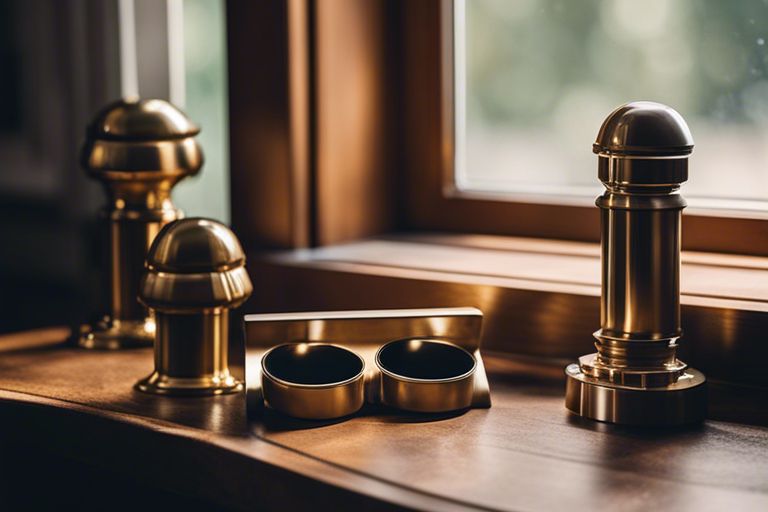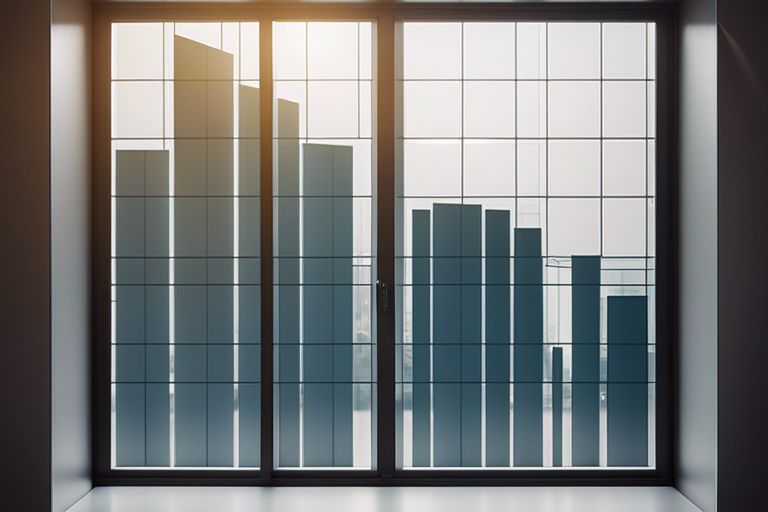When it comes to passive solar design, flat rooflights play a crucial role in maximising natural light and heat within a building. By strategically placing flat rooflights, architects and designers can harness the sun’s energy to reduce the need for artificial lighting and heating, ultimately leading to energy savings and a more sustainable living or working environment. These rooflights allow for optimal daylight penetration while also aiding in ventilation and creating a sense of spaciousness in indoor spaces. However, improper design or placement of flat rooflights can lead to issues such as overheating or glare, emphasising the importance of careful planning and consideration in passive solar design.
Key Takeaways:
- Flat rooflights maximise natural light: By installing flat rooflights in passive solar design, you can maximise the amount of natural light entering a building, reducing the need for artificial lighting during the day.
- Improved energy efficiency: Flat rooflights help to improve energy efficiency by allowing solar heat gain in the winter months, reducing the need for heating, and preventing solar heat gain in the summer months, reducing the need for cooling.
- Enhanced comfort and well-being: Utilising flat rooflights in passive solar design can create a more comfortable and pleasant indoor environment, enhancing the well-being of building occupants through increased natural light and connection to the outdoors.

Fundamentals of Flat Rooflights
Definition and Characteristics
Flat rooflights are horizontal windows installed on flat roofs to provide natural light and ventilation to the interior spaces below. They are designed to be low-profile and sit flush with the roofline, offering a seamless integration with the roof surface. Flat rooflights are typically made of high-quality glass panels that allow maximum sunlight to enter the room while maintaining thermal efficiency.
Characteristics of flat rooflights include their ability to minimise glare through the use of specialised coatings on the glass, as well as their durability in withstanding harsh weather conditions. Flat rooflights are essential components in passive solar design, helping to maximise daylight and reduce the need for artificial lighting during the day.
Types of Flat Rooflights and Materials Used
There are various types of flat rooflights available on the market, including fixed rooflights, opening rooflights, and walk-on rooflights. Each type offers different functionalities to suit the requirements of the space below. Materials commonly used in the construction of flat rooflights include aluminium frames for structural support and toughened glass for the glazing.
This combination of materials ensures that flat rooflights are not only robust and weather-resistant but also visually appealing with a sleek and modern aesthetic. The choice of materials is crucial in determining the energy efficiency and performance of flat rooflights, making them an integral part of the building design.
- Fixed rooflights
- Opening rooflights
- Walk-on rooflights
- Aluminium frames
- Toughened glass
| Fixed rooflights | Opening rooflights |
| Provide continuous daylight | Allow for natural ventilation |
| Minimal heat loss | Enhanced airflow control |
| Low maintenance | Operable for ease of cleaning |
| Sleek design | Increased flexibility |
| Efficient energy performance | Improved indoor air quality |

Integration of Flat Rooflights in Passive Solar Design
Flat rooflights are a key element in passive solar design, allowing for the efficient use of natural light and solar heat gain within a building. By strategically placing rooflights, architects and designers can maximise the benefits of passive solar design, reducing the need for artificial lighting and heating.
Maximizing Solar Heat Gain
When it comes to maximising solar heat gain in a building, the orientation and size of flat rooflights play a crucial role. By positioning rooflights on the south-facing side of a building, direct sunlight can enter the space and warm it up naturally. Additionally, the size of the rooflights should be carefully considered to allow for optimal solar heat gain without causing overheating in the summer months.
Furthermore, incorporating thermal mass beneath or around flat rooflights can help store and distribute heat effectively throughout the building, ensuring a more consistent and comfortable indoor environment.
Controlling Light and Heat Transmission
Controlling light and heat transmission is essential in passive solar design to maintain a comfortable indoor environment throughout the year. Using low-emissivity coatings on flat rooflights can help regulate the amount of heat entering or leaving a building, reducing the need for additional heating or cooling.
Moreover, the use of smart shading systems in conjunction with flat rooflights can further control the amount of sunlight entering a space, preventing glare and excessive heat gain during the warmer months. These systems can be automated to adjust based on the sun’s angle and intensity, ensuring a well-balanced internal environment.
Additionally, designers can incorporate insulated glazing units to improve the overall thermal performance of flat rooflights, enhancing energy efficiency and reducing heat loss during colder periods.

Performance and Energy Efficiency
When it comes to passive solar design, the role of flat rooflights cannot be understated. They play a crucial part in enhancing the thermal performance of a building, thereby improving energy efficiency. By strategically placing flat rooflights, natural light can be optimised to reduce the need for artificial lighting and decrease energy consumption.
Thermal Performance of Flat Rooflights
Flat rooflights are designed to provide excellent thermal performance, helping to maintain a comfortable indoor temperature throughout the year. They are constructed with high-quality materials that offer effective insulation, preventing heat loss in winter and heat gain in summer. This helps to reduce the energy demand for heating and cooling systems, ultimately leading to lower energy bills.
Furthermore, flat rooflights with double or triple glazing not only enhance thermal efficiency but also improve sound insulation. This means a quieter and more energy-efficient living or working environment, contributing to the overall sustainability of the building.
Enhancing Energy Savings with Proper Installation
Proper installation of flat rooflights is crucial in maximising energy savings. By ensuring a professional installation that minimises air leakage and thermal bridging, the overall energy efficiency of the building can be significantly improved. Additionally, combining flat rooflights with solar control glazing can help regulate the amount of heat and light entering the building, further reducing the reliance on artificial heating and cooling.
It is important to note that the correct positioning and orientation of flat rooflights play a key role in enhancing energy savings. By strategically placing rooflights to maximise sunlight exposure in winter and provide shade in summer, the building can benefit from passive solar gain and natural ventilation, reducing the need for mechanical heating and cooling systems.
Design Considerations and Challenges
Aesthetic and Functional Design Factors
When incorporating flat rooflights into a passive solar design, it is crucial to consider both aesthetic and functional factors. Light is a key element in passive solar design, and rooflights can significantly enhance the natural light entering a space. Choosing the right size, placement, and tint of the rooflights is essential to ensure optimal daylighting performance without compromising the overall aesthetic of the building.
Additionally, the thermal performance of the rooflights must be taken into account. Opting for energy-efficient glazing can help maximise the solar heat gain during colder months while preventing excessive heat gain in the summer. Proper ventilation options should also be considered to ensure comfort and air quality within the space. After all, a well-designed flat rooflight should not only look good but also function effectively in enhancing the passive solar design.
Overcoming Common Challenges in Installation and Maintenance
Installing flat rooflights can present various challenges, from waterproofing concerns to structural support requirements. It is essential to work with experienced professionals to ensure that the rooflights are installed correctly and securely. Regular inspections and maintenance are crucial to prevent leaks or damages that could compromise the performance of the rooflights.
One of the common challenges in maintenance is accessing the rooflights for cleaning and repairs. Integrated access hatches or liftable mechanisms can facilitate the maintenance process and ensure that the rooflights remain in top condition. After all, proper installation and maintenance are key to maximising the longevity and performance of flat rooflights in a passive solar design.
The Role of Flat Rooflights in Passive Solar Design
In the aggregate, flat rooflights play a crucial role in passive solar design by allowing natural light to penetrate deeper into a building, reducing the need for artificial lighting and lowering energy consumption. These rooflights also help in regulating internal temperatures by allowing solar heat to warm up the interior spaces during colder months, decreasing the reliance on heating systems. Additionally, they contribute to enhancing the overall aesthetics of a property and improving the occupants’ well-being by providing a connection to the outside environment. Incorporating flat rooflights in passive solar design not only promotes sustainability but also creates a comfortable and energy-efficient living or working environment.
FAQ
Q: What is the role of flat rooflights in passive solar design?
A: Flat rooflights play a crucial role in passive solar design by allowing natural light to enter a building, reducing the need for artificial lighting and heating. They help to illuminate interior spaces evenly and create a comfortable environment while ensuring energy efficiency.
Q: How do flat rooflights contribute to thermal comfort in passive solar design?
A: Flat rooflights are designed to maximise solar heat gain during the winter months and minimise it during the summer months. This helps regulate indoor temperatures, reducing the need for mechanical heating or cooling systems and enhancing thermal comfort for occupants.
Q: Are there any additional benefits of incorporating flat rooflights in passive solar design?
A: Yes, apart from enhancing natural lighting and thermal comfort, flat rooflights also contribute to ventilation and air circulation within a building. They can be designed to open manually or automatically, allowing fresh air to enter and improving indoor air quality, making them a versatile and sustainable design feature.






